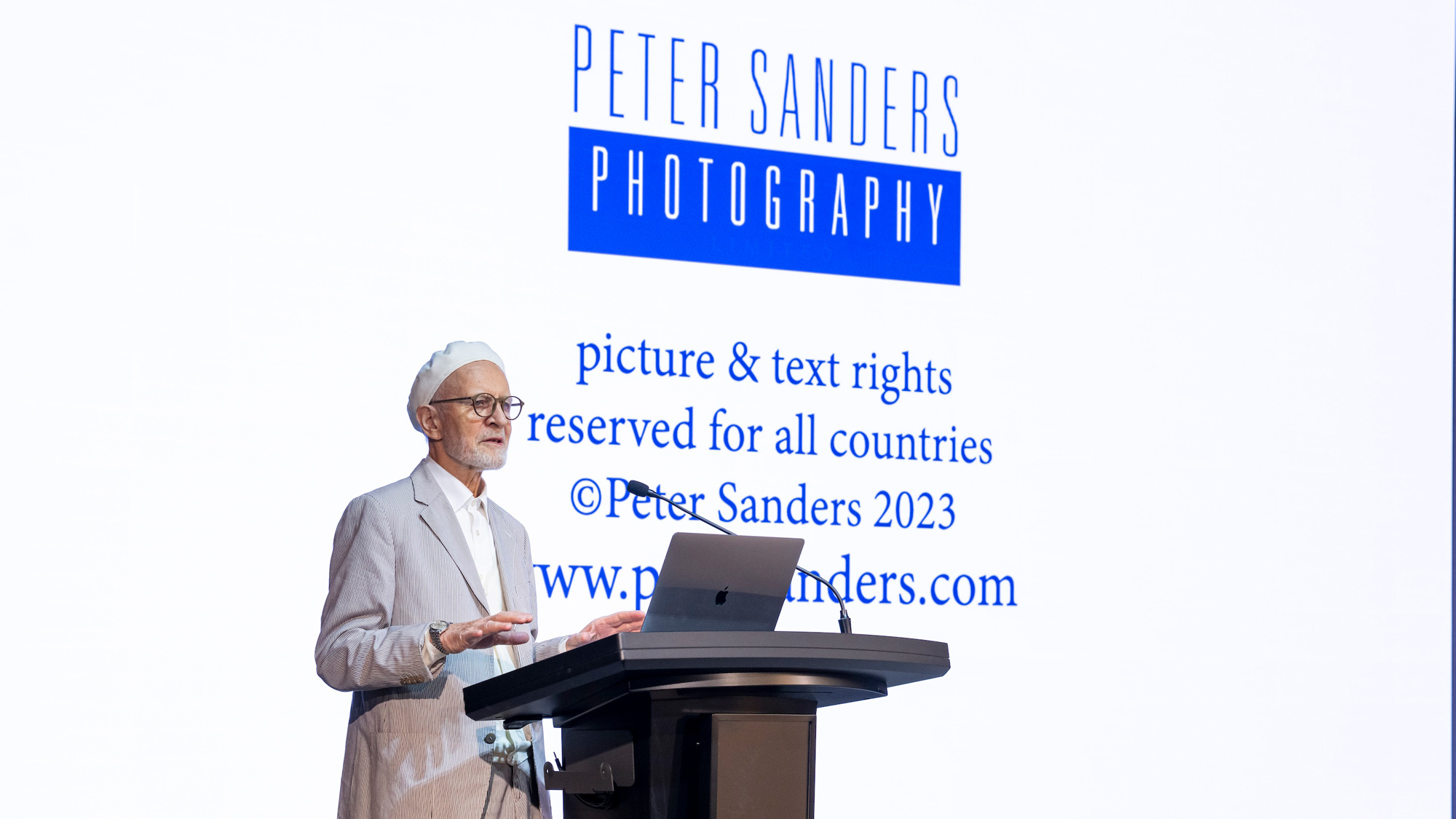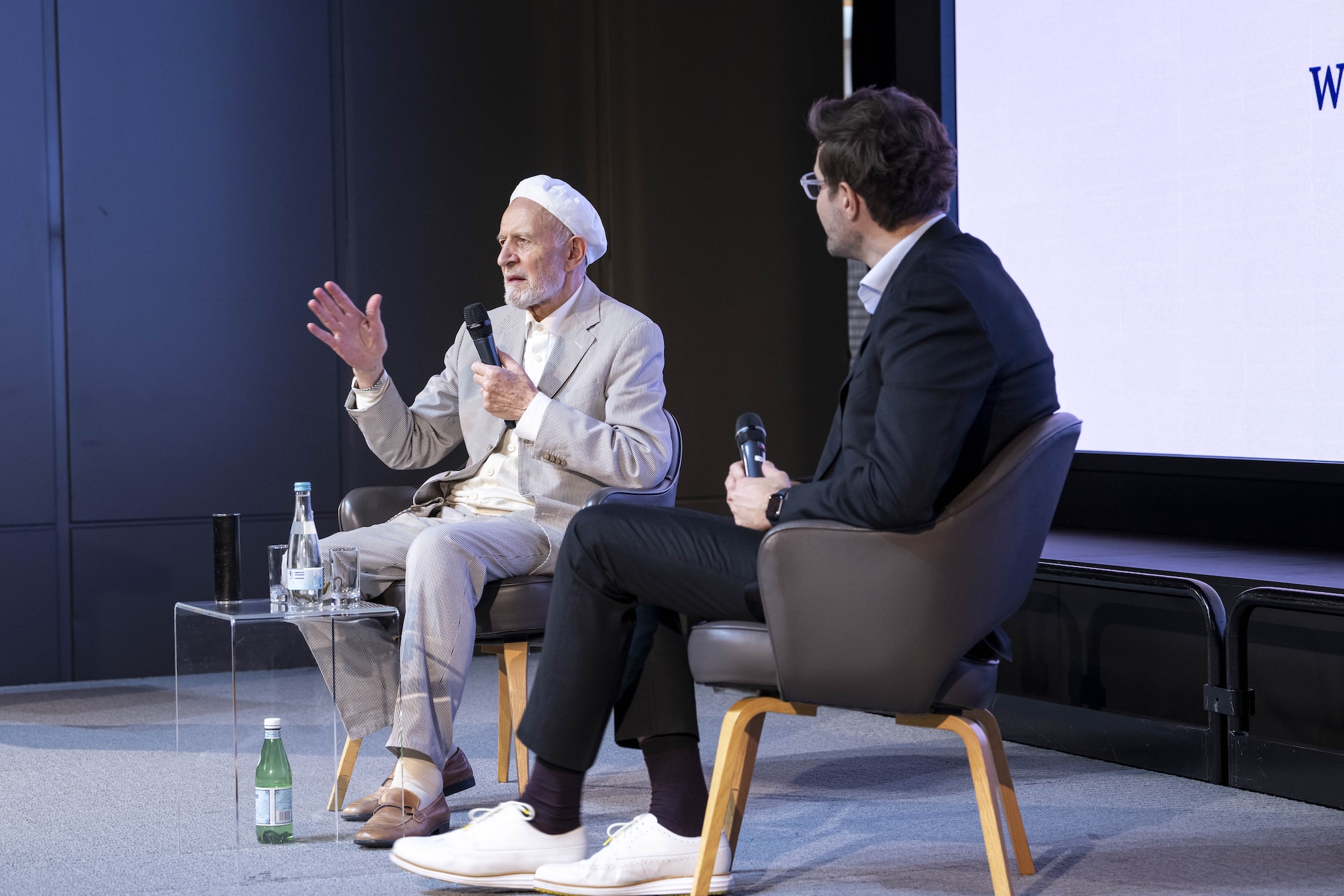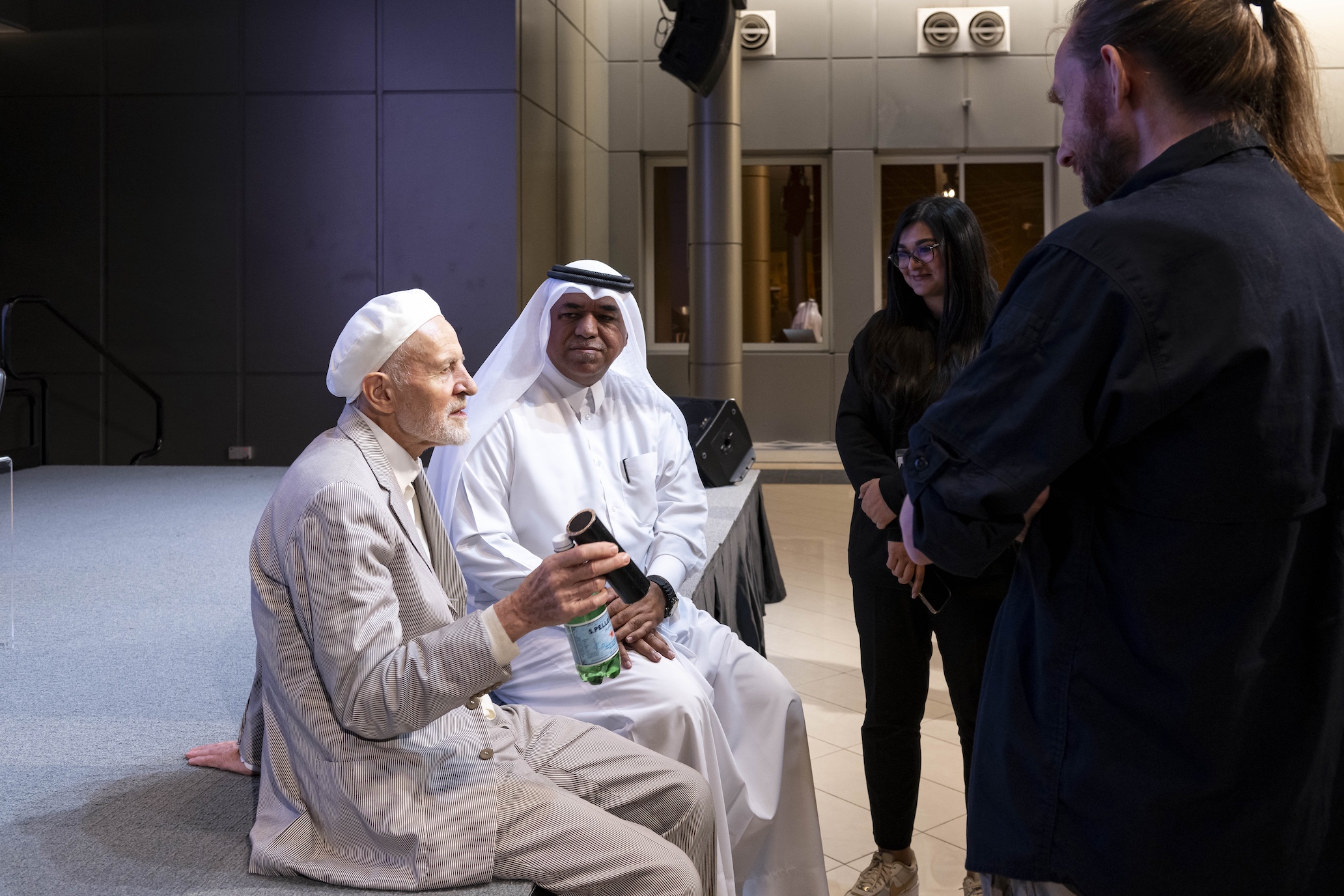- Academics
- Admissions & Enrollment Services
- Research
- Academic & Creative Spaces
- Strategic Partnerships
- Our Impact
- Student Affairs
- Campus & Community
Peter Sanders’ Images – And Words – Make for an Unforgettable Presentation at VCUarts Qatar
December 5, 2023
Categories

Sharing photos, anecdotes and techniques that spanned five decades of professional work, and personal discovery, Sanders spoke with warmth, humanity and compassion
During his visit to the university, Sanders, one of the pre-eminent photographers of the Muslim world, shared his journey for understanding and meaning with the audience


It is not every day that an entire audience is moved to reflective silence. Yet that was the general mood among the listeners when renowned British photographer Peter Sanders wrapped up his presentation at VCUarts Qatar’s Atrium on November 15, 2023.
The university had invited Sanders, who was on a visit to Doha, to give a talk at its campus. Attendees had been told it would be a retrospective of his personal journey in search of understanding and meaning; what they hadn’t expected was how it would make them reexamine their own outlooks toward their lives, their faiths, and their journeys.
Sharing photos, anecdotes and techniques that spanned five decades of professional work, and personal discovery, Sanders spoke with warmth, humanity and compassion. And humility. His words and demeanor, soft, unassuming and almost meditative, seemed to be in stark contrast to the magnitude and depth of the images that were being shown on-screen behind him.
The British photographer transported his audience back in time as he described the processes, places and people that influenced his work and subsequently made him famous.
They stepped into the buzz of the 1960s as they viewed photos he took of some of London’s leading rock and roll stars and gypsy communities.
They listened, captivated, as he explained how it took him two weeks to prepare for the now-famous shot of the hall in the Hassan II Mosque in Morocco, and how it took five years to obtain permission to take the picture of the Green Dome of the Prophet’s Mosque in Madinah, from the vantage point he wanted – the mosque’s minaret.
They hung onto his words as he narrated how he traveled to India, Morocco, Kenya, Mauritania, Saudi Arabia, China, Indonesia and the Comoros Islands to name a few, documenting various faiths; how he discovered spirituality can exist amid poverty; how he accepted Islam in 1971; and how he photographed the Hajj after obtaining permission to do so, rare for a Westerner at that time.
During the question-and-answer session that followed, Sanders spoke with disarming frankness about how he transitioned from photographing rock and roll stars of the 60s to contemplating spirituality through photography.
“When I was young, when I was in the middle of searching for my identity, these musicians and stars were like poets and philosophers. And I looked up to them for meaning. It was a time when there was so much happening in the world; conflicts were happening; it was a time of a spiritual fog. There was this constant search for peace. I wanted peace. Those around me wanted peace. I realized violence is not an option; talking is. Countries are much like families. In a family, not talking is problematic. The more you talk the more you have a chance to resolve differences. I guess that’s how I was drawn to spirituality. I was always oriented towards peace. I became a Muslim due to my yearning for peace and serenity”, he said.
He also talked at length about his approach to photographing people who had never been photographed before.
“I feel that as a photographer you first need to respect people. Really respect them, and their viewpoints, and give them space. Irrespective of language barriers. They, in turn, will respect you for that. For instance, in my book “Meeting With Mountains”, most of those people had never been photographed before. And here I was turning up with my cameras and lenses. I would always ask if I could photograph them. No one ever refused.”
When asked what it takes to find the right frame, the right subject, to create the ‘perfect’ photo, he said, “My rule of thumb is, and it’s something I always tell my students, ‘Take hundreds of pictures, but be your worst critic. You know as the creator of an image, what is wrong with it, and in that process you will learn to improve. My early shots were rubbish; I just hated them. It was years before I put up an image I took on the wall of my own home.
“There’s truth in the saying that it takes 10,000 hours of practice to perfect a craft. Just do it. Keep doing it. Make mistakes. Keep learning. Do it to the best of your ability. In that process, you’ll also learn about yourself; you’ll become your own spiritual partner. Patience wins at the end of the day.”
As the attendees left the venue after the presentation, an audience member summed up the experience when she said, “Yes, I can see why he’s one of the pre-eminent photographers of the Muslim world. He’s also one of the most down-to-earth and humble of human beings to visit here. Inspiring. It was a privilege just to listen.”
Photographs by Raviv Cohen

